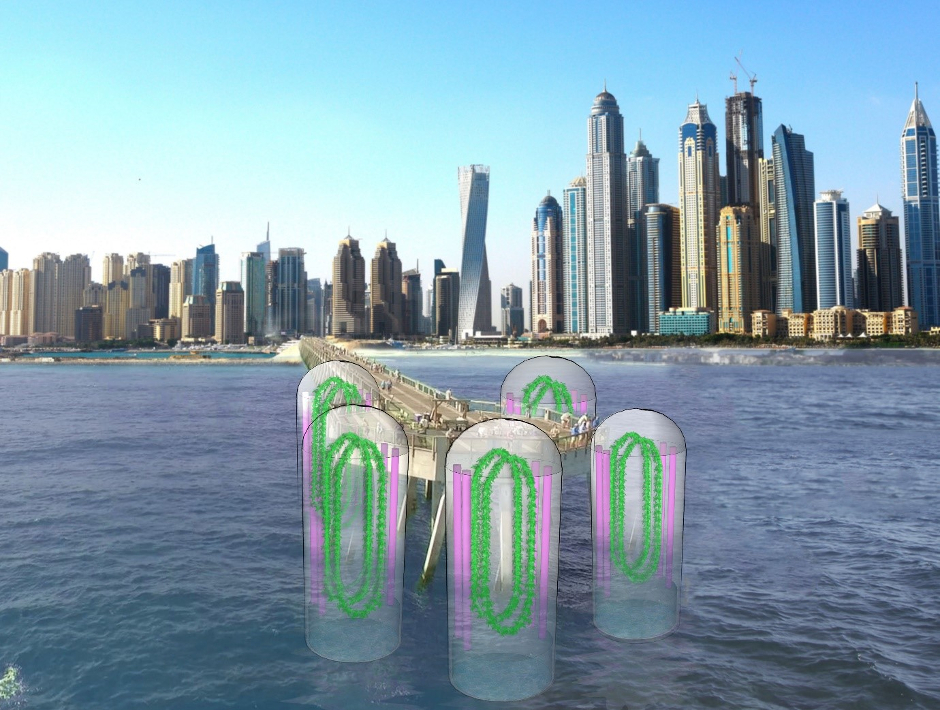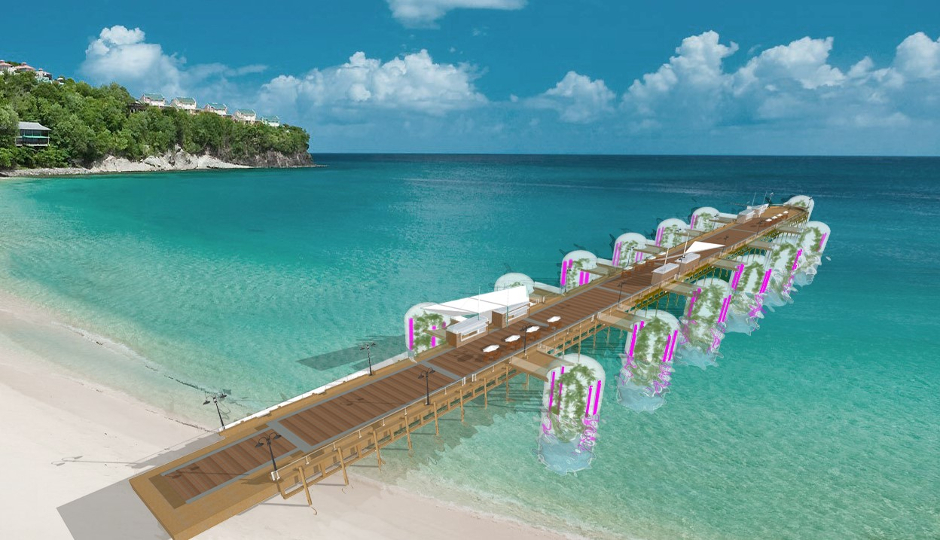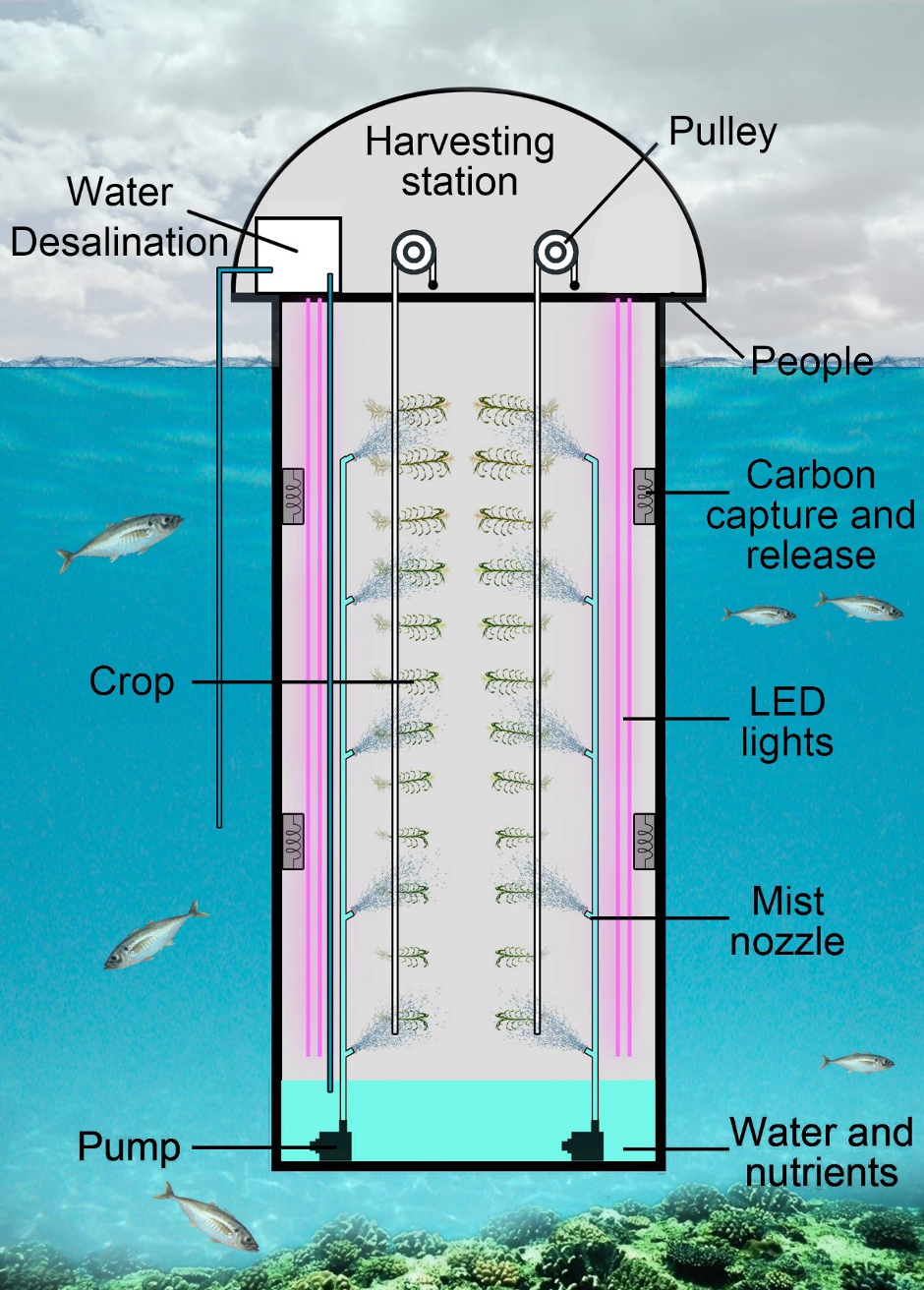
However, rising sea levels caused by climate change are likely to lead to increased erosion and inundation of salt water, reducing the amount of land available for farming, particularly on small islands and in low-lying coastal regions.
Now researchers at Nottingham University have developed the concept of floating deep farms, consisting of large vertical shafts or containers, submerged under seawater near coastal areas.
The containers, which could be used to grow a variety of crops, could also act as a sink for carbon dioxide captured from the local environment.
The project is the brainchild of Prof Saffa Riffat, chair in sustainable energy at Nottingham’s faculty of engineering, and research fellow Prof Yijun Yuan, a specialist in mining engineering and sustainable energy.
In October, 2018 the pair unveiled plans to build underground farms within the disused tunnels of depleted coal, salt and gold mines in countries such as the UK and China. They have since had interest in the idea from as far afield as the US and South Africa.
To develop the idea further, the researchers have now filed a series of six patents on the use of such deep farms in land, seawater, and rivers.
Crops can be grown all year round
“For areas close to the sea, which are vulnerable to sea level rise caused by climate change, one option is to go into the water, so they can still carry on producing food,” said Riffat.
The floating containers would be sealed at the bottom, and covered with a dome at the top. Crops would be grown using either hydroponics, in which plant roots are fed with nutrient-rich waters, or aeroponics, in which they are housed in a mist environment.
The containers would be lit by LEDs of appropriate wavelengths to maximise photosynthesis, while consuming as little power as possible.
Waste heat from the LEDs could also be combined with solar energy and used to convert seawater into fresh water by desalination. The solar energy and LEDs would heat the salt water, causing it to evaporate, and this vapour would then be condensed inside tubes to produce fresh water for the plants.
Unlike conventional farming, which is restricted by annual seasonal changes, the controlled environment within the containers means crops can be grown all year round. The enclosed farms also allow plant diseases and pests to be more easily controlled.

What’s more, submerging the farms in seawater provides a stable temperature all year round, unlike conventional greenhouses and vertical farms, which rely heavily on expensive and energy-intensive heating and cooling systems to regulate the environment.
To provide the necessary power for the LEDs and other systems, the vertical shafts could be directly connected to offshore wind turbines, or wave or tidal power devices, to utilise locally available renewable energy.
The floating farms could also incorporate aquaculture for fish and shellfish, with oxygen produced by the plants fed directly to the sea creatures.
They could also provide protection for coastal communities from erosion, according to Riffat.
“You could have a number of these farms around coastal areas, and they could also work as a barrier, a defence system across the coastal area,” he said.
The researchers have also filed a patent on the use of deep farms in desert regions. The vertical shafts could be sunk into the sand, with solar panels used to power desalination of salty or brackish water from the underground water basin.





Poll: Should the UK’s railways be renationalised?
I think that a network inclusive of the vehicles on it would make sense. However it remains to be seen if there is any plan for it to be for the...